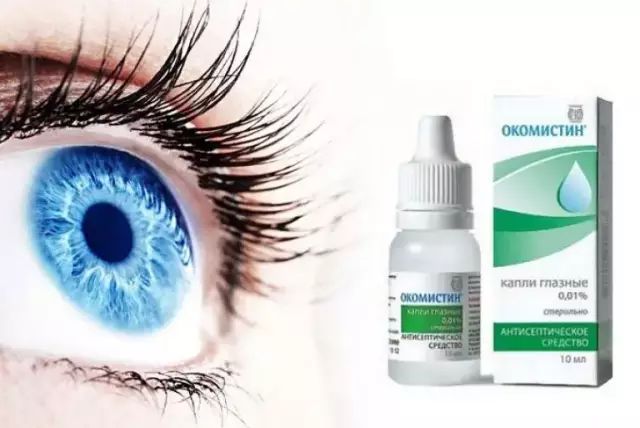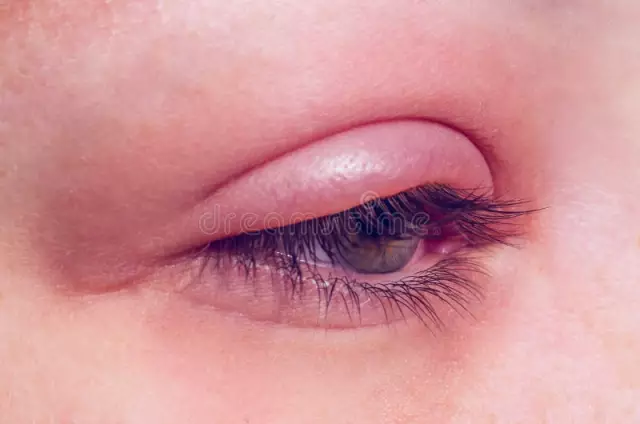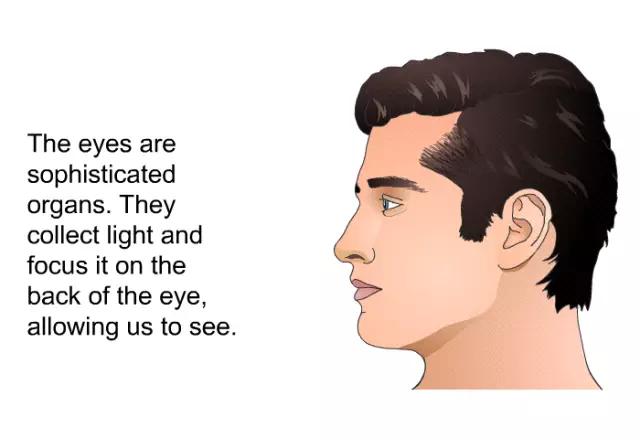- Author Rachel Wainwright [email protected].
- Public 2023-12-15 07:39.
- Last modified 2025-11-02 20:14.
Trusopt
Trusopt: instructions for use and reviews
- 1. Release form and composition
- 2. Pharmacological properties
- 3. Indications for use
- 4. Contraindications
- 5. Method of application and dosage
- 6. Side effects
- 7. Overdose
- 8. Special instructions
- 9. Application during pregnancy and lactation
- 10. Use in childhood
- 11. In case of impaired renal function
- 12. For violations of liver function
- 13. Drug interactions
- 14. Analogs
- 15. Terms and conditions of storage
- 16. Terms of dispensing from pharmacies
- 17. Reviews
- 18. Price in pharmacies
Latin name: Trusopt
ATX code: S01EC03
Active ingredient: dorzolamide (dorzolamide)
Producer: Laboratoires Merck Sharp & Dohme-Shibret (France)
Description and photo update: 2018-21-11
Prices in pharmacies: from 234 rubles.
Buy

Trusopt is a local drug with antiglaucoma action.
Release form and composition
Dosage form Trusopt - eye drops: transparent, colorless or almost colorless, somewhat viscous liquid (in a cardboard box 1 plastic bottle of the "Okumeter Plus" type, containing 5 or 10 ml of the drug).
Composition of 1 ml drops:
- active substance: dorzolamide - 20 mg (dorzolamide hydrochloride - 22.26 mg);
- auxiliary components: mannitol - 23 mg; hyetellose - 4.75 mg; sodium citrate - 2.94 mg; benzalkonium chloride - 0.075 mg; sodium hydroxide - for pH correction 5.5-5.8; water for injection - up to 1 ml.
Pharmacological properties
Pharmacodynamics
Trusopt contains dorzolamide hydrochloride as an active ingredient, which is an inhibitor of carbonic anhydrase II. Inhibition of carbonic anhydrase in the eyeball (ciliary body) reduces the production of intraocular fluid. This is presumably caused by inhibition of the synthesis of bicarbonate ions, after which they are reduced to sodium and excreted. The result of using the drug is a decrease in IOP (intraocular pressure).
Pharmacokinetics
With prolonged use, dorzolamide selectively accumulates in erythrocytes (associated with selective binding to carbonic anhydrase II), while the plasma concentration of free dorzolamide remains at an extremely low level. The substance binds to plasma proteins to a moderate extent (approximately 33%).
The only metabolite of dorzolamide is N-desethyl-dorzolamide; it inhibits the enzyme carbonic anhydrase II, as well as the enzyme carbonic anhydrase I, to a lesser extent than dorzolamide. The accumulation of the metabolite occurs in erythrocytes, it binds mainly with carbonic anhydrase I.
Excretion of dorzolamide and its metabolite occurs mainly through the kidneys unchanged. After the end of therapy, dorzolamide is unevenly washed out of erythrocytes. In the beginning, the elimination is very intense. This leads to a significant and rapid decrease in the concentration of the substance. In the future, the process goes into a slow washout phase with a half-life (T 1/2) of about 4 months.
Indications for use
Adults:
- primary open-angle glaucoma;
- secondary glaucoma (without anterior chamber angle block);
- pseudoexfoliative glaucoma;
- ophthalmic hypertension.
For children from 1 week old, Trusopt is prescribed for the treatment of glaucoma (as monotherapy or in addition to beta-blockers).
Contraindications
- chronic renal failure;
- pregnancy and lactation;
- age up to 1 week;
- individual intolerance to the components of the drug.
According to the instructions, Trusopt is prescribed under medical supervision for severe liver failure.
Instructions for use of Trusopt: method and dosage
Recommended dosing regimen: 1 drop into the affected eye / eyes 3 times a day (morning, afternoon and evening).
After canceling the previous drug with antiglaucoma action, therapy with Trusopt begins the next day.
When carrying out combined treatment with other eye drops, the interval between their use should be at least 10 minutes.
The drug is instilled into the space between the eyelid and the eye, for which you need to tilt your head back and pull the lower eyelid down a little.
Ophthalmic medicines, if used incorrectly, can become infected with common bacteria that cause eye diseases. Serious eye damage with consequent loss of vision can result from the use of infected solutions. If an eye infection develops or there is a suspicion that the drug may be contaminated, you should consult your doctor before further use of the bottle.
Do not enlarge the dispensing tip opening.
Side effects
Among the most common adverse reactions due to which Trusopt eye drops were canceled are conjunctivitis and eyelid reactions (3% of cases).
Possible adverse reactions [(> 10%) - very common; (> 1% and 0.1% and 0.01% and <0.1%) - rarely; (<0.01%, including isolated messages) - very rare)]:
- respiratory system: rarely - pharyngitis, nosebleeds;
- nervous system: often - headache; rarely - paresthesia, dizziness;
- organ of vision: very often - pain and burning; often - lacrimation, superficial punctate keratitis, blurred vision, inflammation of the eyelids, conjunctivitis, itching, irritation of the eyelid; infrequently - iridocyclitis; rarely - transient myopia (disappears after discontinuation of the drug), eye redness, pain, decreased intraocular pressure, hyperkeratosis of the eyelids, corneal edema, detachment of the choroidal membrane of the eye after surgical interventions for restoring the outflow of intraocular fluid;
- allergic reactions: rarely - symptoms / signs of local reactions (eyelids) and systemic allergic reactions, including difficulty breathing, urticaria, angioedema, itching, rash; very rarely - bronchospasm;
- digestive system: often - bitter taste in the mouth, nausea; rarely - xerostomia;
- urinary tract: rarely - urolithiasis;
- skin and mucous membranes: rarely - toxic epidermal necrolysis, Stevens-Johnson syndrome, contact dermatitis;
- organism as a whole: often - fatigue, asthenia.
The profile of Trusopt's adverse reactions in children is comparable to that in adult patients. Most often, the development of the following disorders was observed in children: up to 2 years - discharge from the eyes, conjunctival injection; 2-6 years: conjunctival injection, burning sensation in the eye, inflammation of the eyelids, pain in the eye.
Overdose
The main symptoms are: dysphagia, electrolyte disturbances, metabolic acidosis, headache, dizziness, weakness, unusual dreams, drowsiness, nausea.
Therapy: symptomatic (aimed at maintaining the vital functions of the body). Plasma concentrations of electrolytes (especially potassium) and blood pH values should be monitored.
special instructions
Trusopt contains benzalkonium chloride (preservative), which can be adsorbed by contact lenses. Lenses must be removed before instilling the drug. They can be installed no earlier than 15 minutes after the procedure. Be aware that benzalkonium chloride can discolor soft eye lenses.
Influence on the ability to drive vehicles and complex mechanisms
Patients during the period of therapy with Trusopt are advised to refrain from driving vehicles.
Application during pregnancy and lactation
Trusopt is not prescribed during pregnancy / lactation.
Pediatric use
Trusopt eye drops are not prescribed for children under 1 week.
With impaired renal function
Trusopt is not prescribed for chronic renal failure.
For violations of liver function
In severe liver failure, Trusopt should be used under medical supervision.
Drug interactions
Studies on the study of drug interactions between Trusopt and other drugs have not been conducted.
Combination therapy with high doses of acetylsalicylic acid needs special attention.
The possibility of mutual enhancement of the systemic effects of dorzolamide and carbonic anhydrase inhibitors for internal use with their simultaneous use is not excluded.
When using dorzolamide, it is necessary to take into account the possibility of developing violations of the acid-base balance.
Analogs
Trusopt's analogues are: Dorzopt, Dorzolamid-SOLOpharm, Dorzolamid-native, Glaukopt.
Terms and conditions of storage
Store in a place protected from light at temperatures up to 30 ° C. Keep out of the reach of children.
Shelf life is 2 years.
After opening the package, Trusopt can be used for 28 days.
Terms of dispensing from pharmacies
Dispensed by prescription.
Reviews about Trusopt
According to reviews, Trusopt, in comparison with other drugs of similar action, is relatively inexpensive. It is noted that the drug effectively reduces IOP. Of the shortcomings, they most often indicate the need to bury the eyes 3 times a day and the development of pronounced side effects, including systemic ones.
Price for Trusopt in pharmacies
The approximate price for Trusopt eye drops for 1 bottle of 5 ml is 312-557 rubles.
Trusopt: prices in online pharmacies
|
Drug name Price Pharmacy |
|
Trusopt 2% eye drops 5 ml 1 pc. 234 r Buy |
|
Trusopt eye drops 2% 5ml 242 r Buy |

Anna Kozlova Medical journalist About the author
Education: Rostov State Medical University, specialty "General Medicine".
Information about the drug is generalized, provided for informational purposes only and does not replace the official instructions. Self-medication is hazardous to health!






